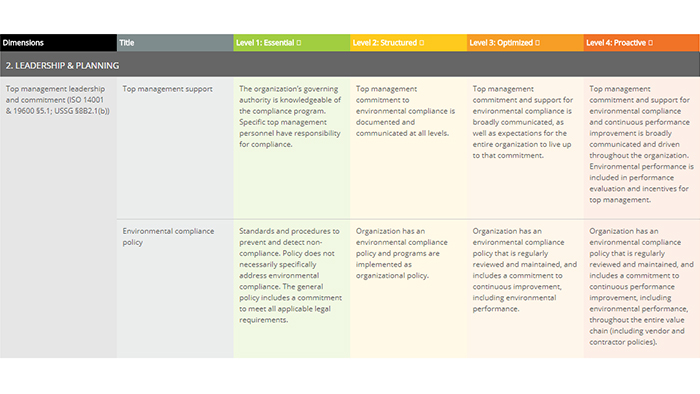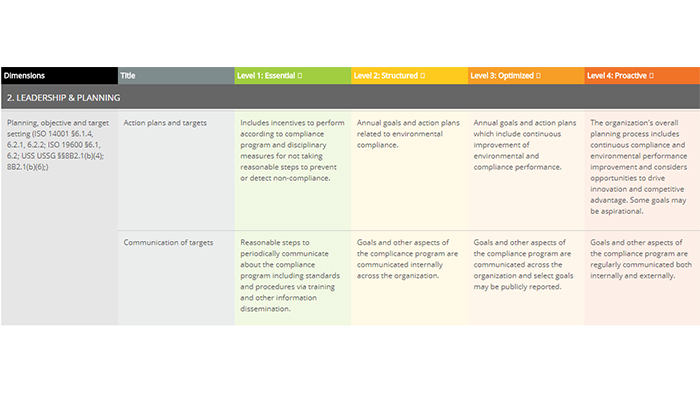Retail CLM – 2: Leadership and Planning
- By [ Tiffin Shewmake ]
- 02/28/2018
Today we are looking at the second dimension-- Leadership and Planning.

Sub-Dimension 4 |Top management leadership and commitment
Support from top management is a requirement for any compliance program. It is not an exaggeration to say that this dimension is perhaps the most important and the most predictive of success. Management sets the organizational culture, is best positioned to communicate the importance of compliance, and has the authority to allocate resources. At the basic level, management needs to be knowledgeable and supportive of compliance programs. At the other levels, greater management engagement helps take programs beyond the minimum bar of compliance to find ways to reduce risk and environmental impacts, and to find value in the compliance program.The other critical element of this dimension is the organization’s environmental compliance policy. Organizations at the essential level will have a general compliance policy. Moving across the matrix, policies become more specific and include references to environmental compliance and commitments to continuous improvement and environmental performance.

Sub-Dimension 5 |Planning, objective and target setting
Setting targets is a core feature of an environmental compliance program. Targets communicate what the organization thinks is important, creates accountability and provides a way for staff to evaluate their work. Basic programs generally limit their focus to compliance goals. Programs across the model increasingly incorporate environmental performance and continuous improvement into their targets as well as looking for goals that will help them derive value from the program.The second part of this dimension is communication. Across the matrix, communication increasingly broadens to include more staff internally and external reporting of goals.



